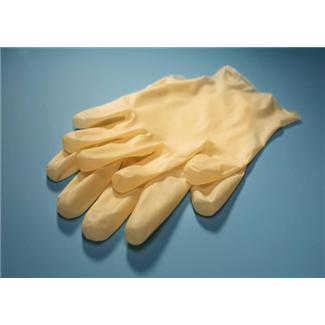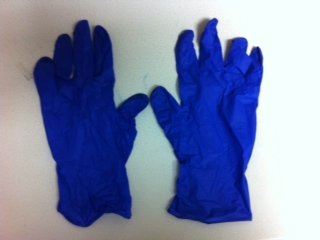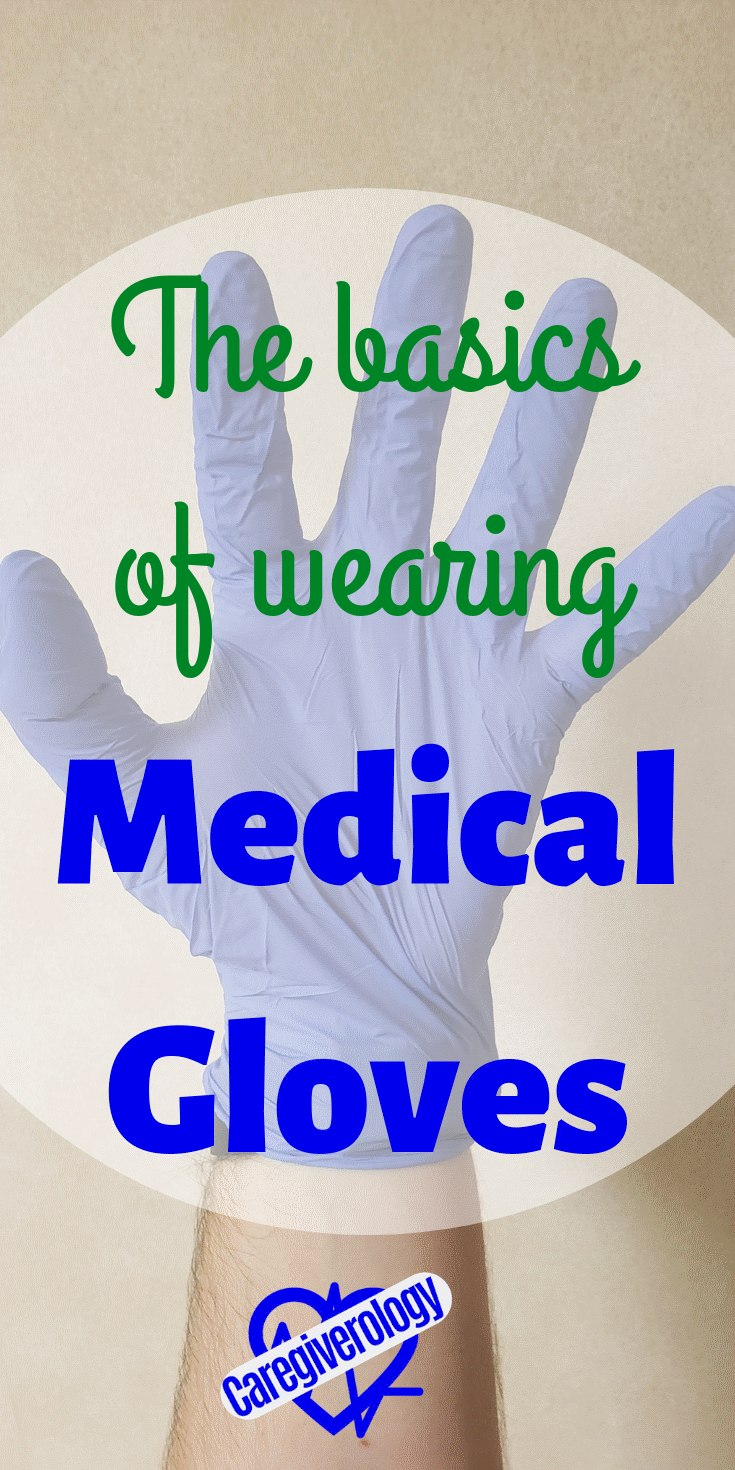The Basics of Wearing Medical Gloves
Every caregiver should have at least one box of medical gloves. Working in a hospital, I probably use more gloves than any other item there. Unlike handwashing, you don't necessarily have to wear a pair for every task for every patient.
Have plenty Size Putting on Taking off When to wear
Have Plenty of Them
Do not use the same gloves more than once and certainly don't use the same pair for different patients. Take them off before you even leave the room. One pair, one time, one patient.
Contrary to popular belief, you should not put hand sanitizer on your gloves. They aren't meant to be reused like that. If your gloves are soiled, the best thing to do is change them.
If you don't have enough to do that, get more. I used to restock gloves for my patients every shift even if there's a few left in the box. It's best to have too many rather than not enough.
 Medical gloves
Medical glovesWhat's Your Size
Medical gloves come in many different sizes primarily small, medium, and large. There is no way for me to tell you what size fits your hands. Like a ring, you just have to try out different sizes until you find that perfect fit. It may slightly vary depending on which brand you get.
How do you know they fit? If you have to really struggle to get them on or they feel like they're cutting off your circulation, they're too small. If you have a hard time doing simple tasks or they keep sliding around your hands, they're too big. They have to feel natural on your hands otherwise they will hinder you from giving proper care.
If one of them rips or tears, don't freak out, just simply take that one off and put another one on. If I know I'm going to be using my hands a lot or am doing something that may cause them to tear, I'll double up and put two on each hand.
Some medical gloves are made of latex while others are latex free such as the blue/purple nitrile. If you have a choice, I would recommend non-latex gloves because many people are allergic to latex. However, the nitrile ones aren't biodegradable which means they won't decompose over time like latex.
Putting Them On
To put one on, make sure the shortest of the five ends is lined up with your thumb. Then just stick your hand in from the bottom and slide it onto your hand as far as you can. Doing so should take no longer than a few seconds. If you will be going through multiple pairs, learning to do this quickly is a must in order to manage your time.
Make sure your hands are completely dry before attempting to do this or else you'll have a hard time sliding it on your hand. If you are still having trouble, try a different size.
 Nitrile gloves
Nitrile glovesTaking Them Off
Removing contaminated gloves without contaminating your hands can be tricky if you don't know how. You want to do so in such a way that you're not getting what's on the outside of the gloves onto your bare hands.
The first one is easy, just pinch the outside of the glove at the palm of your hand and pull it off. It doesn't matter which hand you start with. Just do what feels natural.
If done correctly, it will easily slip off and turn inside out which keeps all of the outside contamination on the inside of the glove. Then you can simply hold the removed glove in the palm of your gloved hand.
The second one is the one some people have trouble with. The best way is to slide two fingers inside the cuff of the other glove with your ungloved hand and push towards the tips of your fingers turning it inside out. That way the outside never touches your bare skin.
Now you have both gloves turned inside out with all of the contamination trapped inside. Now you can simply throw them in the trash and wash your hands. If this seems awkward at first, don't worry, it becomes extremely easy with a little practice.
Medical gloves should be used for every patient no matter the task at hand. It may seem redundant, especially if you sanitize before and after care, but it really isn't. They play a very important role in infection control. Don't skip out on wearing them, it could save you and your patient a lot of trouble.
When to Wear Them
I used to think you put on gloves every time you touch a patient or anything in the room. However, this is simply not the case. Wearing them for everything defeats the reasoning for wearing them in the first place. It can be harmful to get in the habit of wearing them without thinking about why you are.
So why do we wear them? There are actually two answers to this question. They are there to protect not only you, but your patient as well. The reasoning isn't just one sided. You have to think about protecting both parties at the same time.
Here are a few points to think about. It's a good idea to wear gloves when you are potentially going to be touching anything that comes out of the human body such as blood, urine, feces, sweat, and saliva. This also goes for non intact skin such as wounds, incisions, and rashes. I would even include moments where you are going to be puncturing skin such as giving insulin.
Another good rule of thumb is to wear them when you are going to touch any part of their skin that would normally be covered by a bathing suit such as the genitals, buttocks, and women's breasts. This is not only to protect you from things such as bodily fluids, but also to show respect and prevent accusations of sexual harassment.
When in doubt, it doesn't hurt to just put a pair on. At the very least keep them in your pocket just in case you have to make a quick decision and slip them on before doing something. Just be aware of what you are touching and potentially contaminating and change in between if necessary. It is important that you are fully aware and mindful of the fact that you indeed have medical gloves on and that you have a purpose for doing so.
List of Caregiver Supplies and Equipment
From The Basics of Wearing Medical Gloves to Home
Recent Articles
-
Common Truck Crash Injuries and Legal Remedies - Caregiverology
Jul 19, 25 10:49 AM
Known for its sun-drenched beaches, vibrant arts scene, and bustling maritime industry, Fort Lauderdale is a city that sees heavy traffic both on its roads and at its busy port. Unfortunately, with th… -
Why Expert Legal Help Matters After Serious Injury - Caregiverology
Jul 19, 25 10:35 AM
In Houston, over 67,600 car crashes occurred in 2023, resulting in 290 fatalities and 1,612 serious injuries. That’s roughly 185 accidents every day. -
How Life Care Planners Support Injury Recovery - Caregiverology
Jul 19, 25 10:18 AM
In Los Angeles, life care planners play a vital role in supporting injury recovery, especially for individuals facing catastrophic injuries such as traumatic brain injuries or spinal cord damage.





New! Comments
Have something to say about what you just read? Leave a comment in the box below.